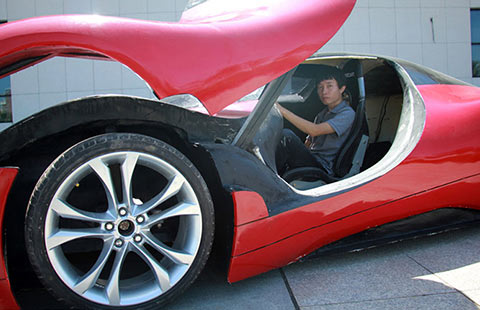Reform only way forward for China's economy
(Xinhua) Updated: 2016-07-22 10:41BEIJING - China must push through reform, for there is no plan B.
It was revealed last week that GDP in the second quarter of 2016 grew year on year by 6.7 percent, the same as that of the first quarter and falling within the government's growth target of 6.5-7 percent.
China's economy has show signs of steady growth in the first half, according to Sheng Laiyun, spokesperson of the National Bureau of Statistics.
Such a growth rate, though much lower than the double-digit growth in the past, is a remarkable achievement that has not come easy, considering the sluggish global growth and changed domestic scenario.
Yet there are concerns that the slowdown of the world's second-largest economy is far from over and may ultimately drag the world into another crisis.
Such concerns are overdone. The pessimists are missing something -- China is not only more economically robust than they think, it is also putting itself through painful, but necessary reforms to make growth more sustainable.
The robustness rests on several pillars. Thanks to a boom in services, China created 7.17 million new urban jobs in the first half of 2016, the same as in the first half of 2015 and making slower growth more tolerable. Most of China's debts are domestic, and its debt levels are within control and lower than other major economies. A moderate deficit level (2.4 percent in 2015 and a target of 3 percent for 2016), large household savings and massive foreign exchange reserves strengthen the country's ability to endure risk.
Even if the worst happens, China has ample policy tools to cushion a downturn. After the latest cut in interest rates in October, the benchmark one-year lending rate still stands at 4.35 percent, leaving the central bank more room to maneuver. Its unified treasury system makes bailout plans easier to implement, and thus China is not likely to see the kind of debt crisis in the EU.
However, the real reason to doubt the pessimism is China's reforms.
Problems facing China's economy, including a troubled property sector, industrial overcapacity, rising debt levels and the lack of new growth engines, are all connected with each other and piecemeal solutions no longer work. The only way to restore vitality to the economy is to push through reforms.
As Premier Li Keqiang once put it, "what is called for is not temporary fixes: My government has resisted the temptations of quantitative easing and competitive currency devaluation. Instead, we choose structural reform."
Despite the slowdown and continued downward pressure, China is acting in vital areas and will not backtrack.
China is pushing through market reforms, to speed the transition to a sustainable growth model markedly more driven by innovation and consumer spending. Employment, income levels and the environment are all high on policy makers' list of priorities.
Supply-side structural reform is also advancing as the country moves to address issues like industrial overcapacity, a large inventory of unsold homes and unprofitable "zombie companies."
Another area of reform is administrative. China has been striving to cut red tape and make life easier for private companies. This triggered a boom in the registration of private firms -- over 2.6 million were created in the first half, more than in the whole of 2013.
These reforms will offer meaningful solutions to China's economic woes and bring the economy onto a more solid footing.
To be sure, China's economy cannot, and should not, repeat its past growth record. It may be on a bumpy journey, but will maintain a slower, but stable growth, which is not only good for the country, but the world at large.
- G20 members urged to take broad-based policies to support global growth
- Squeezed in sedan, Chinese families with more kids look to MPV
- China cuts retail fuel prices
- Britain's steel city signs $1.3b investment deal with Chengdu
- General Motors 2Q profit sets record
- Huawei seeks to expand operations in Argentina
- Capital flight eases in first half of year
- China urges US to take heed of plea on antidumping determination


















